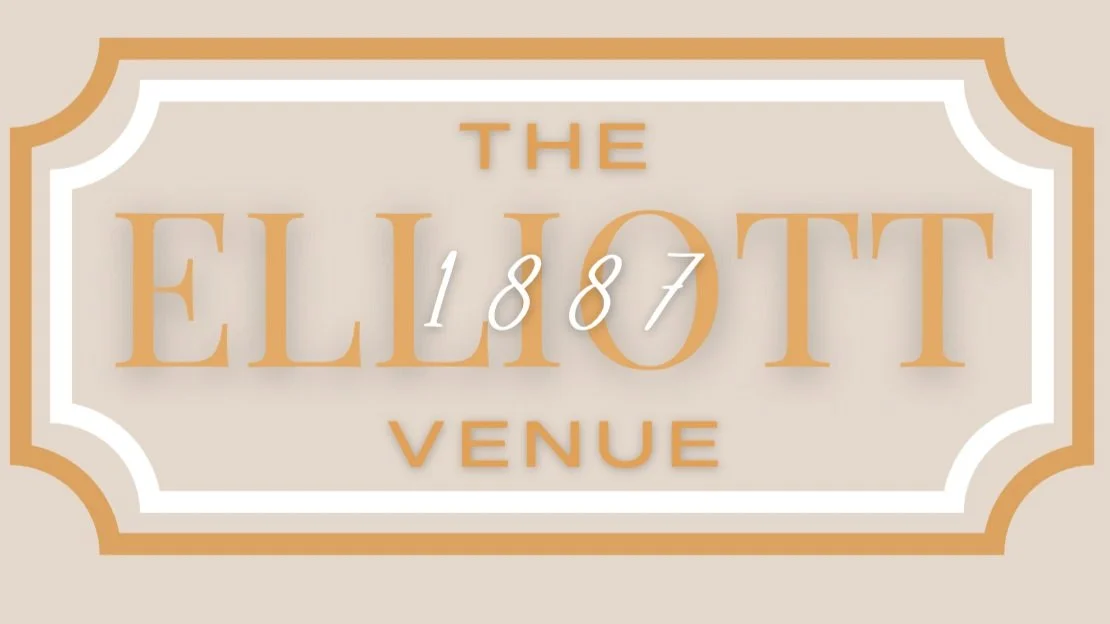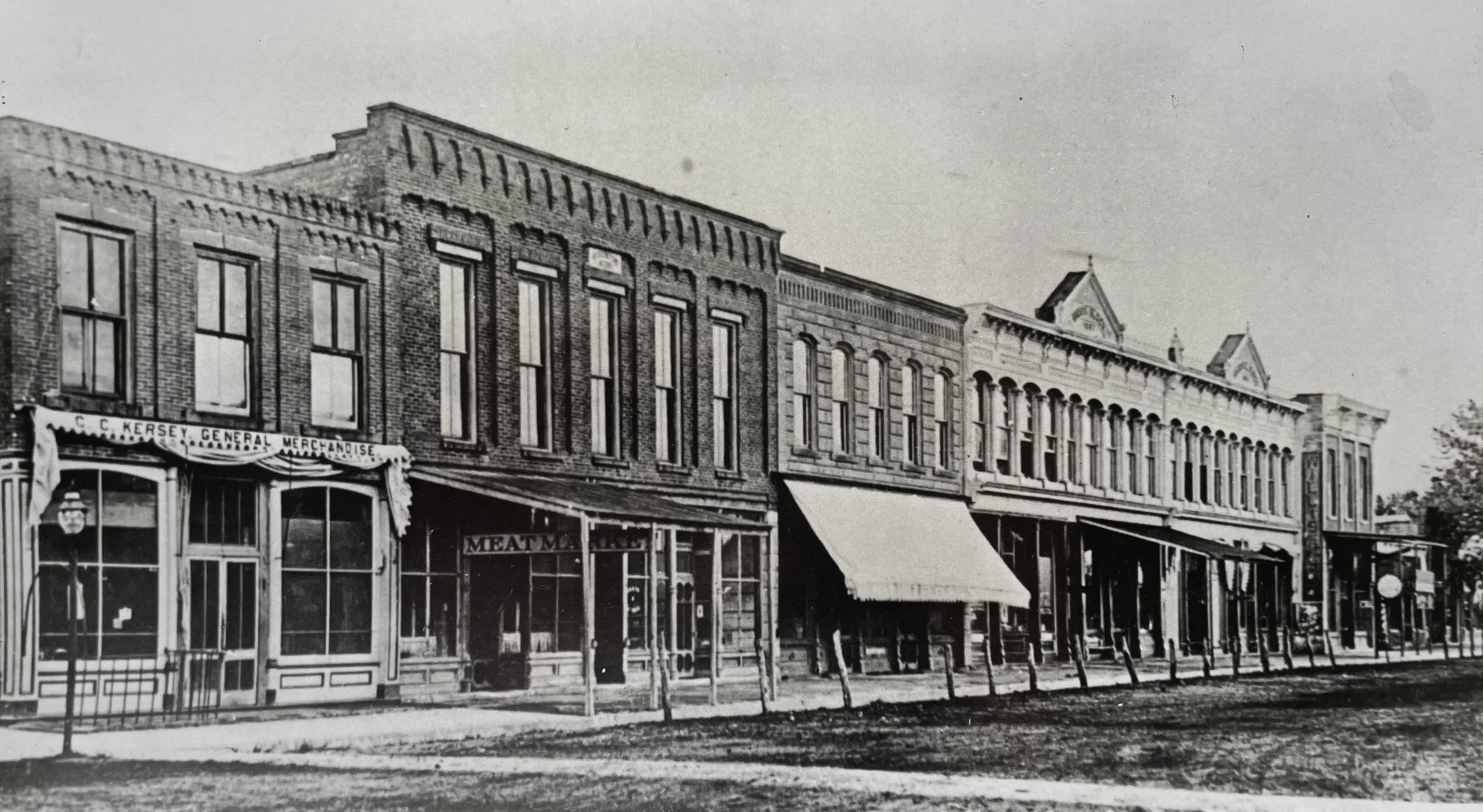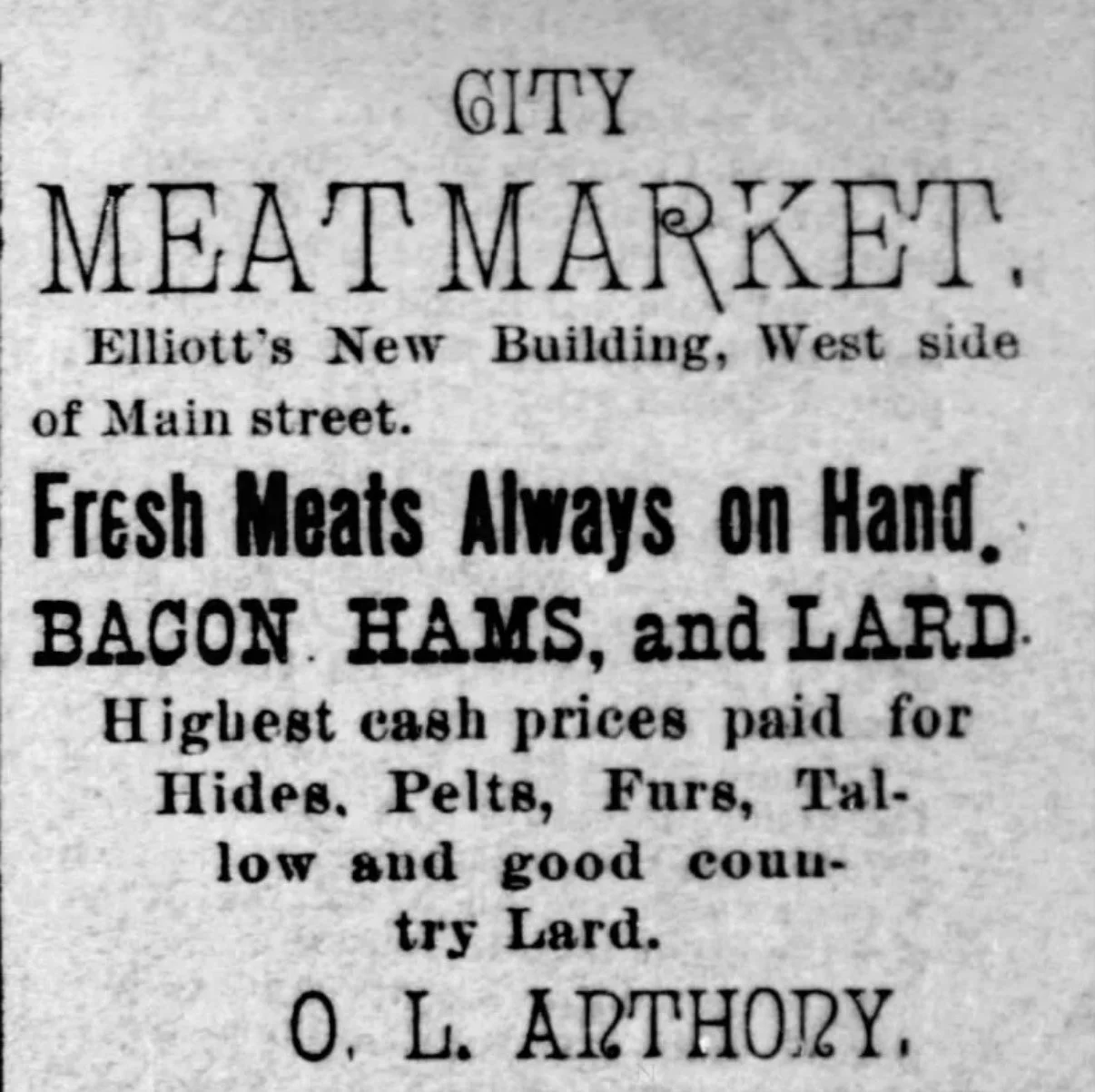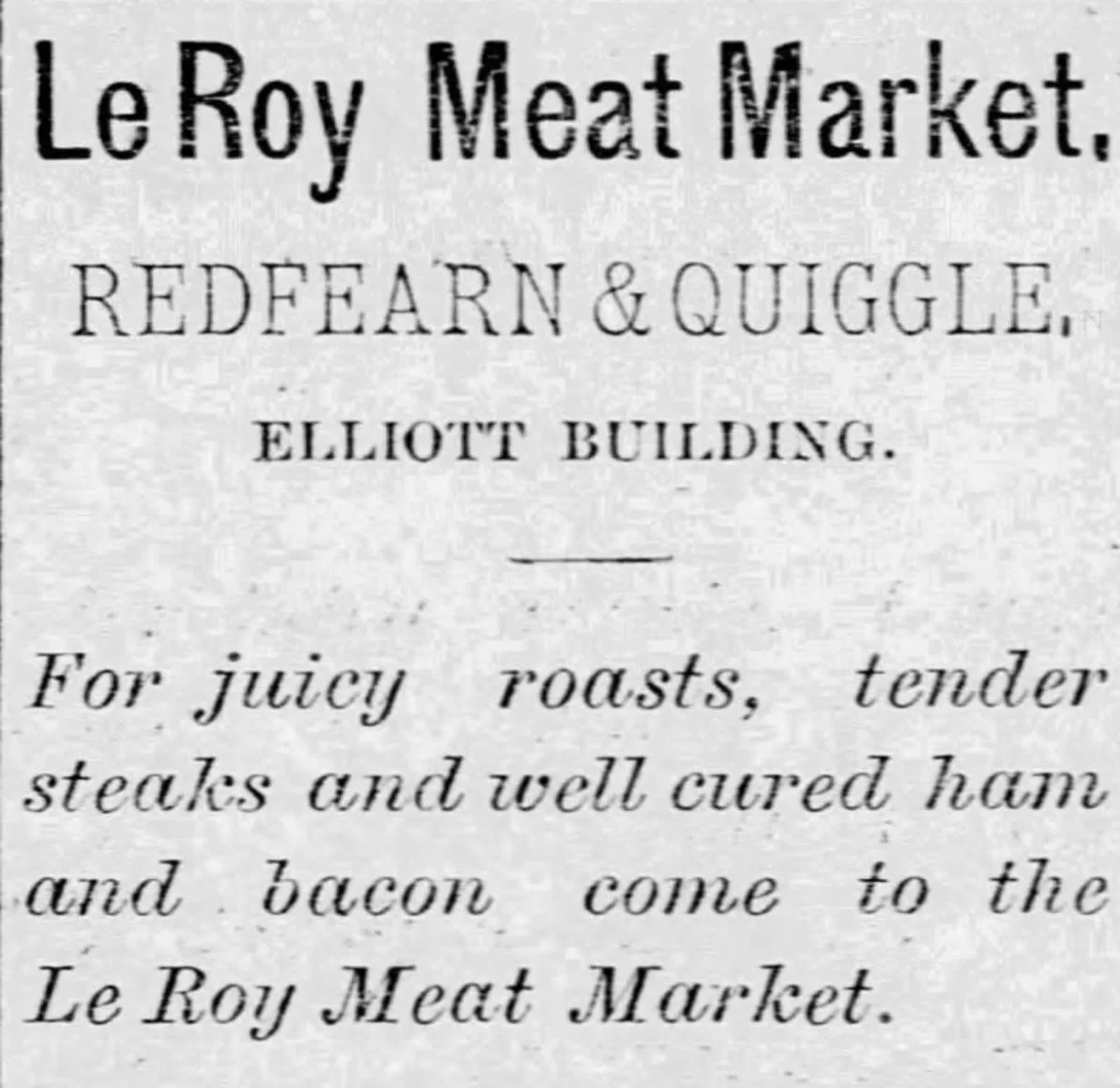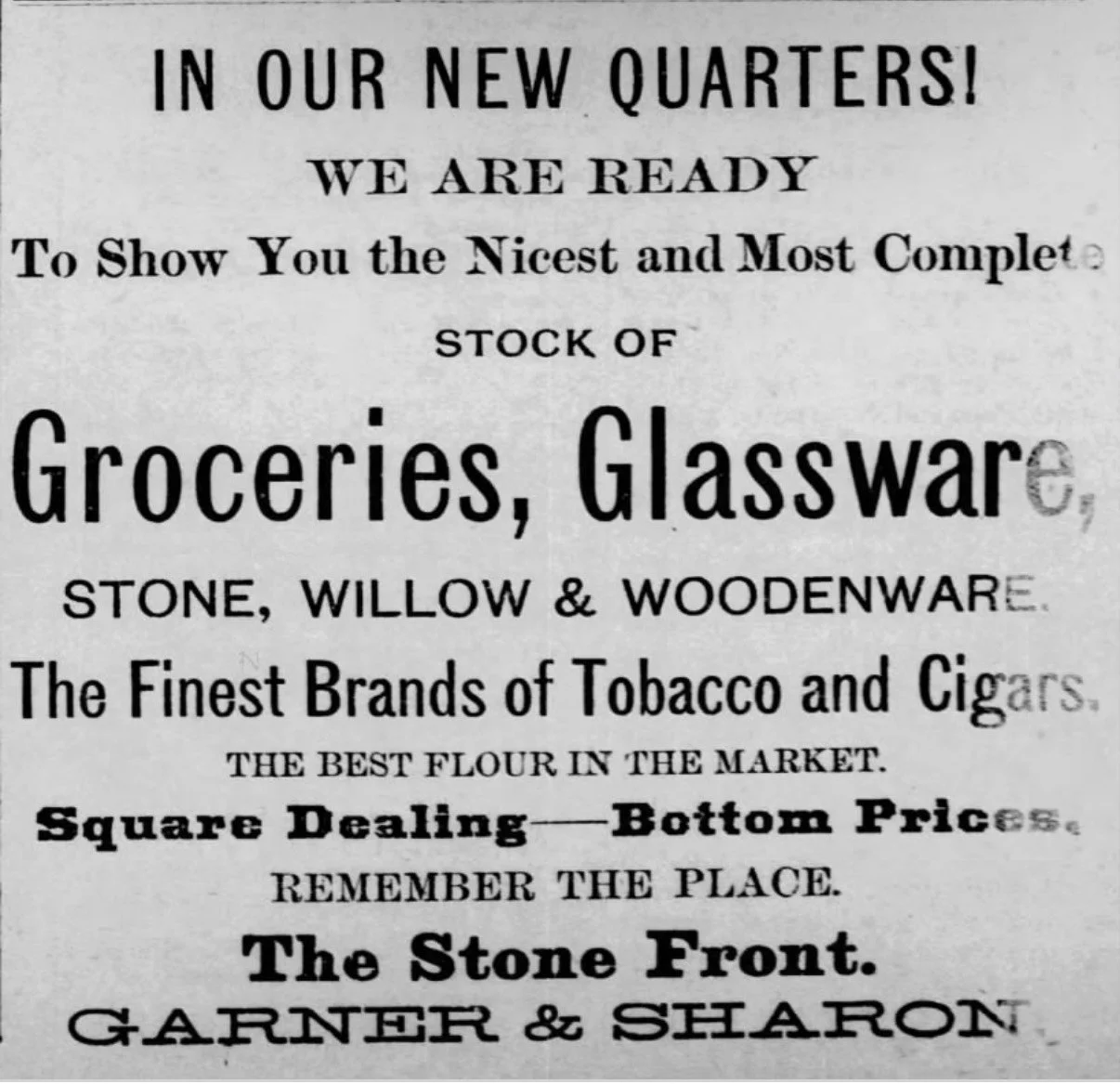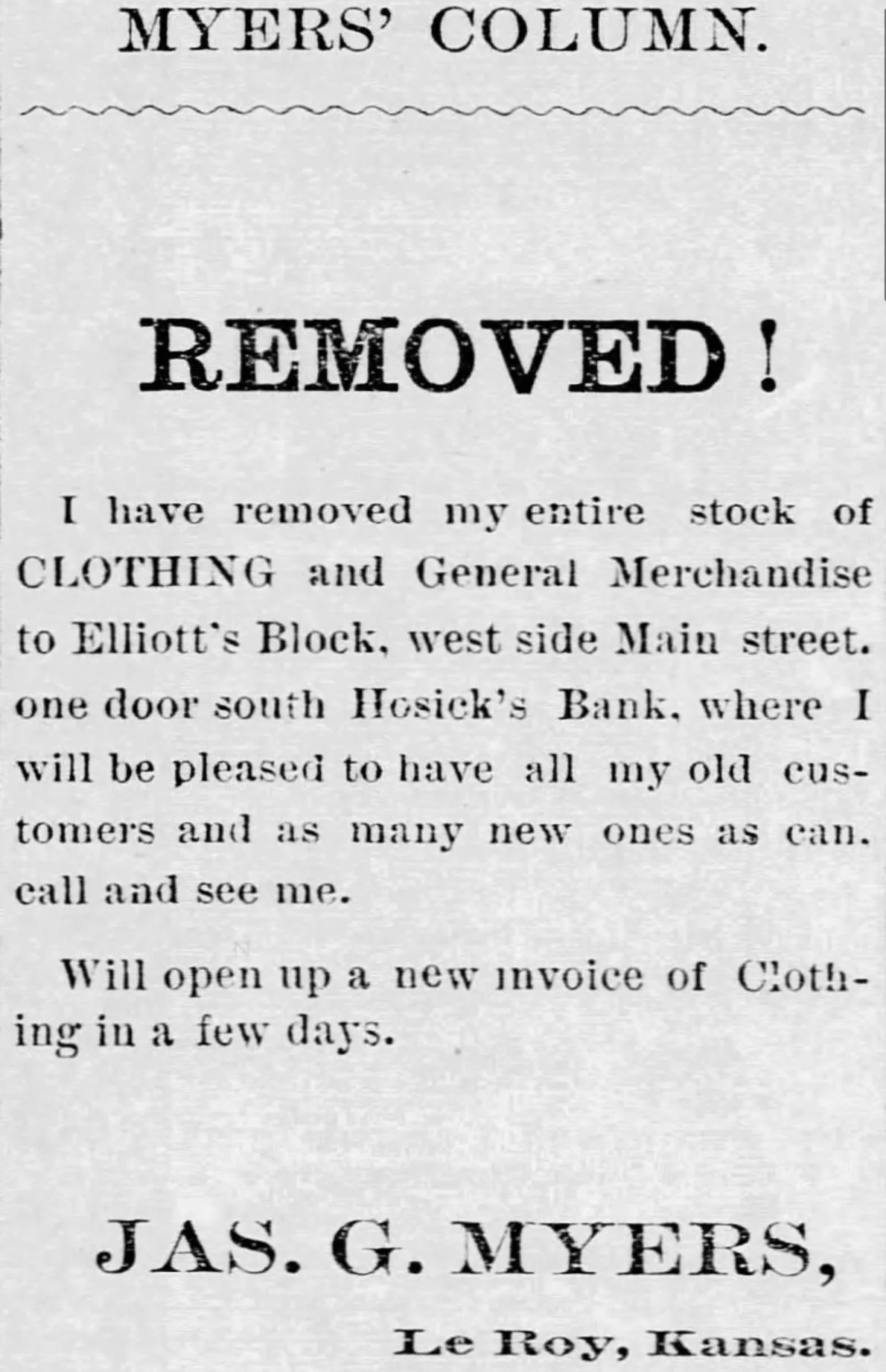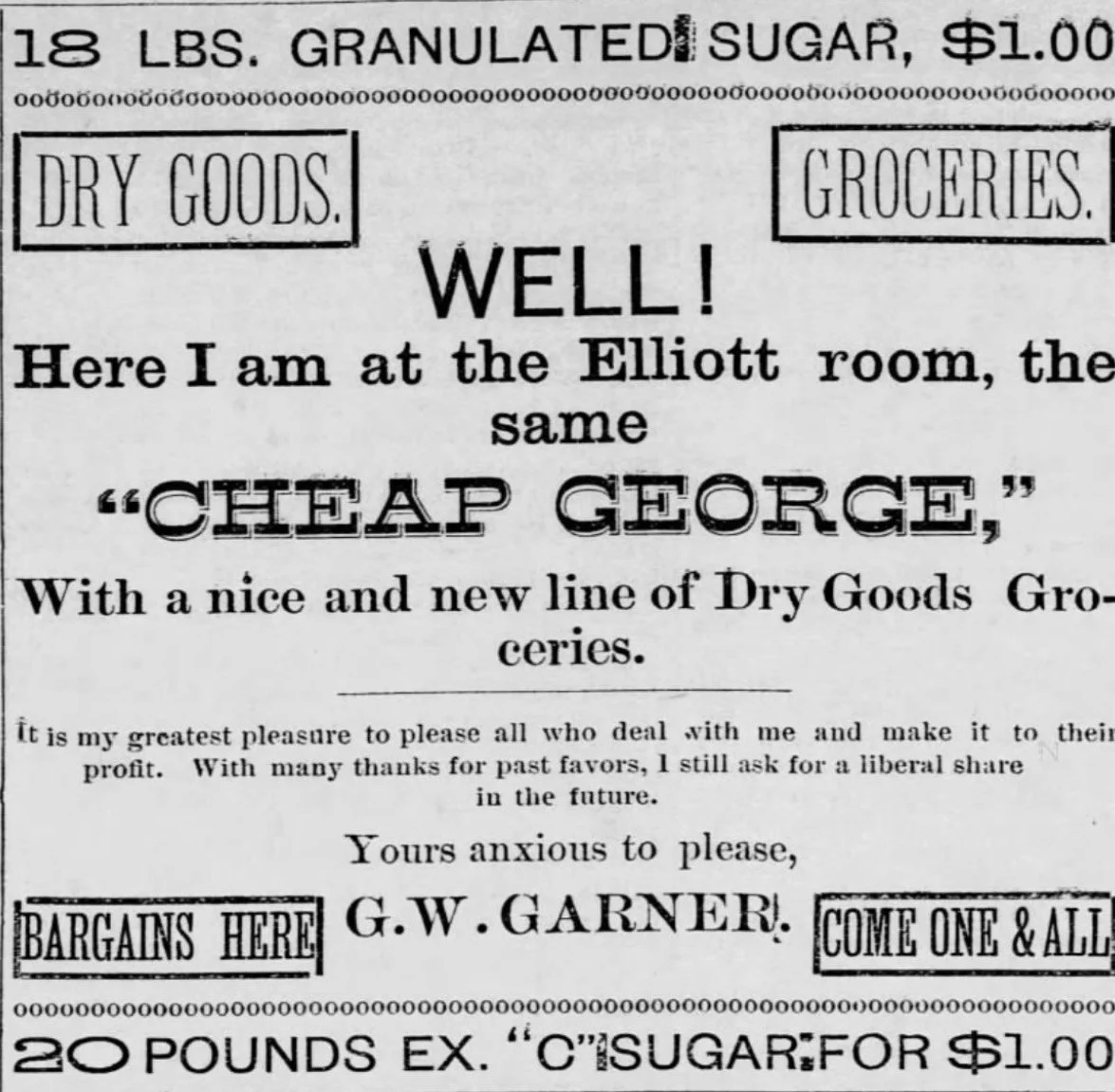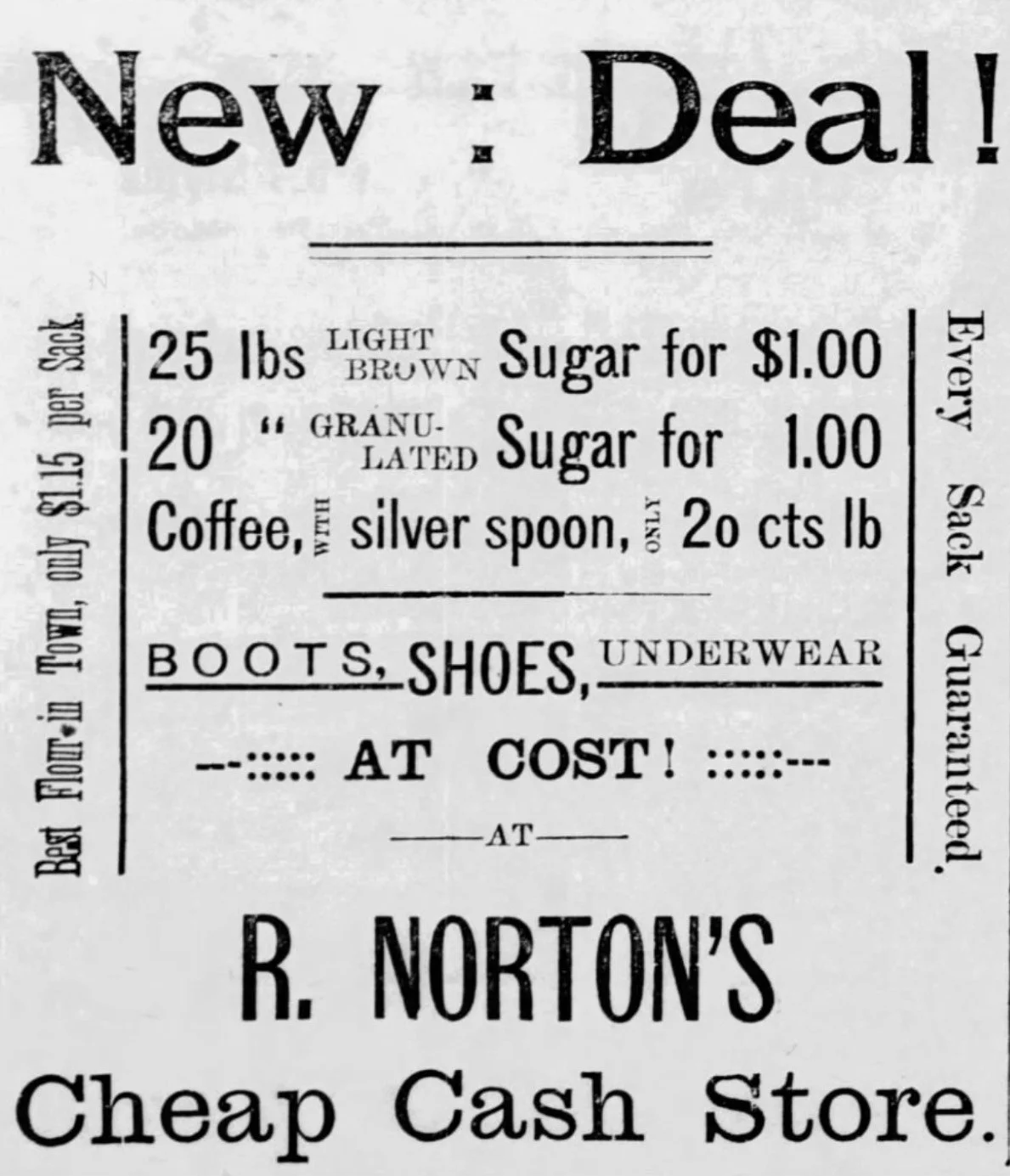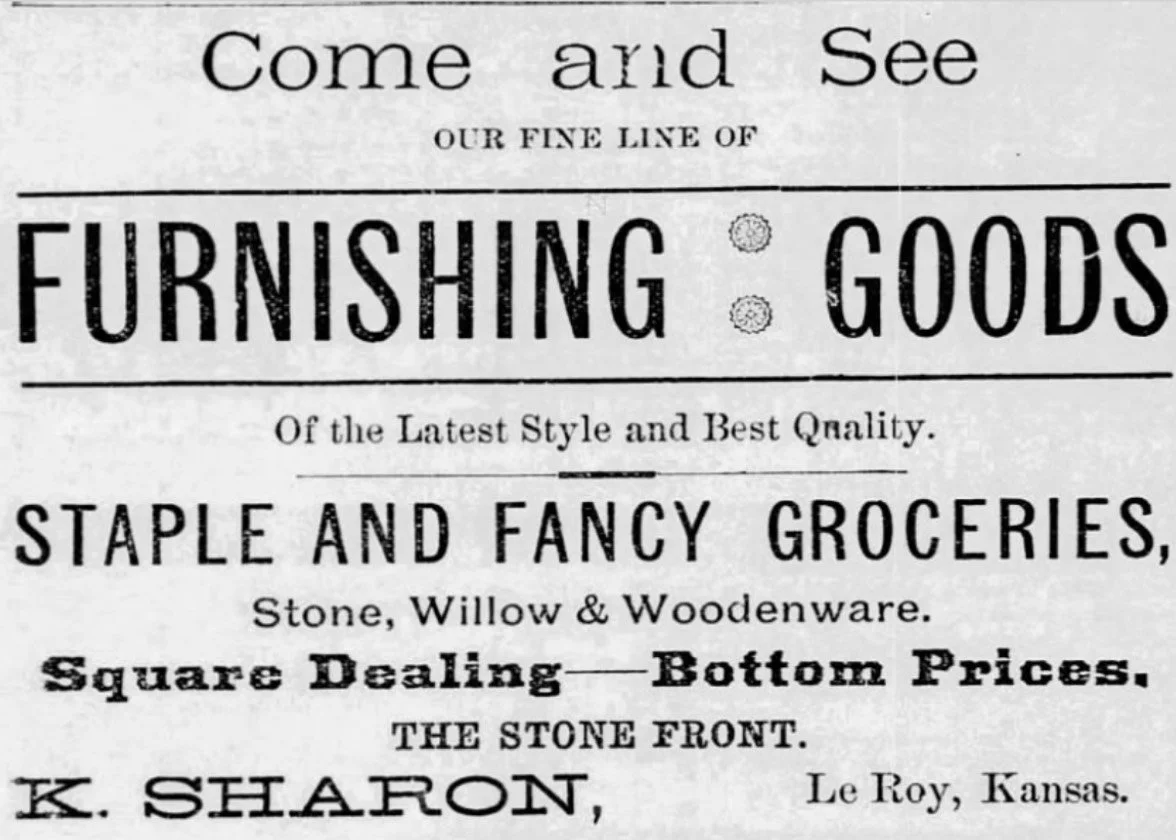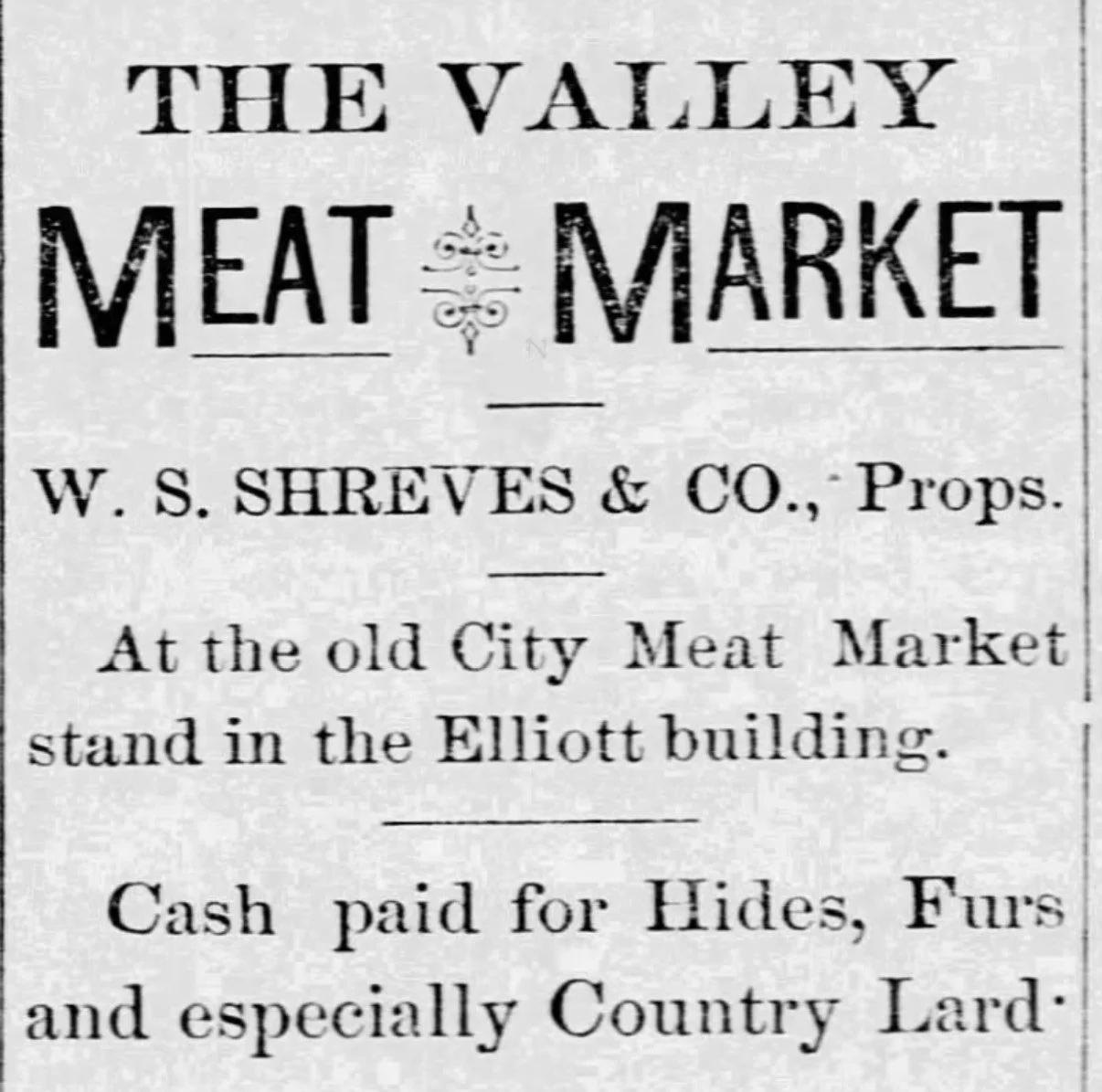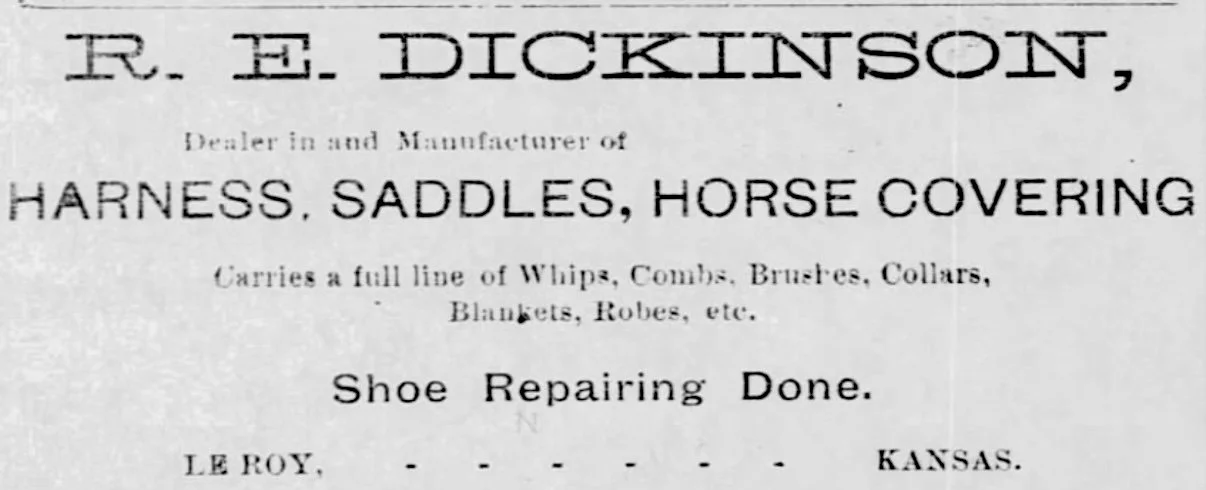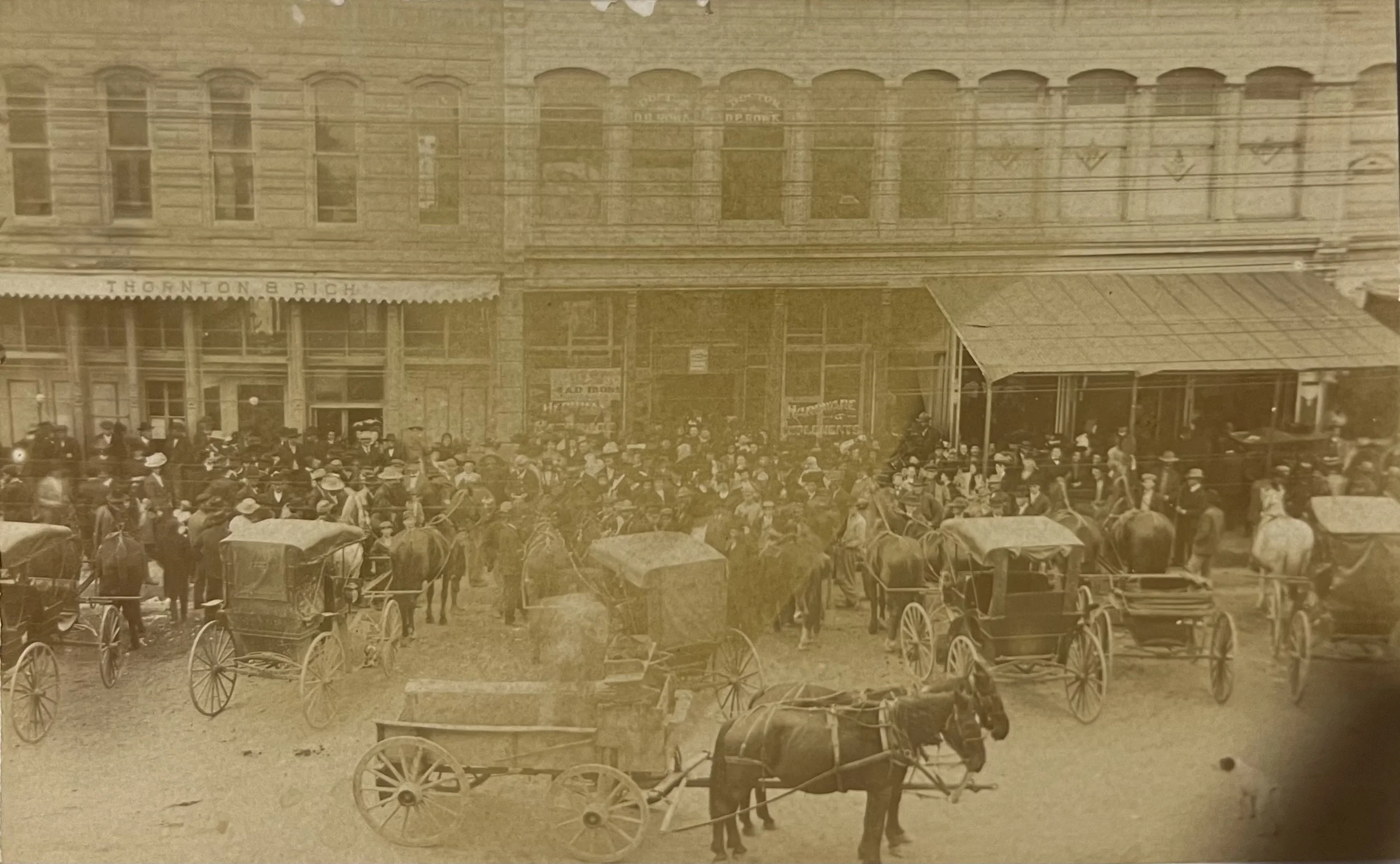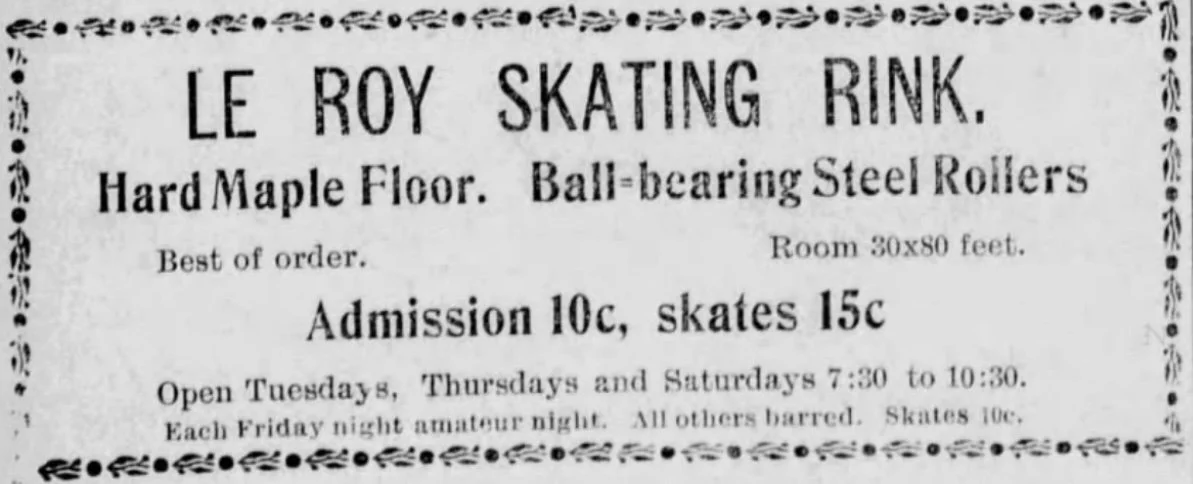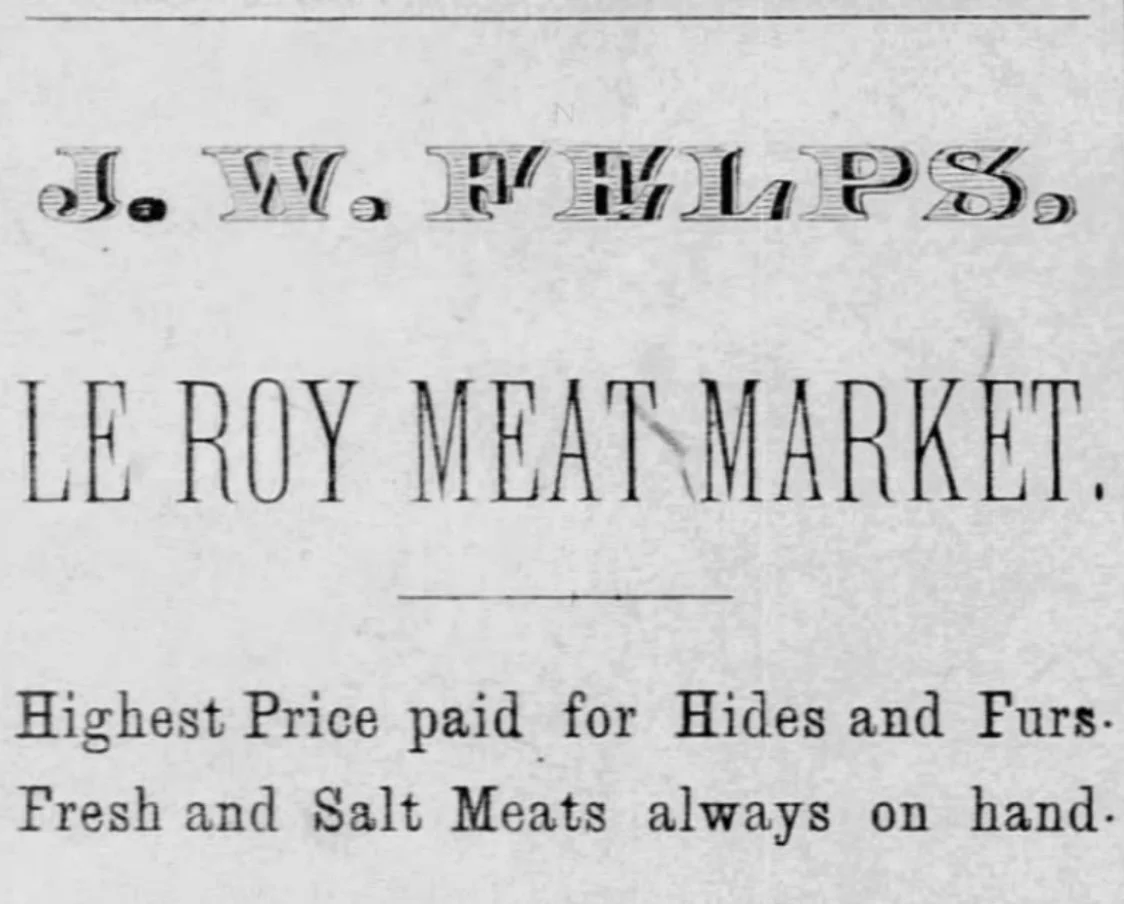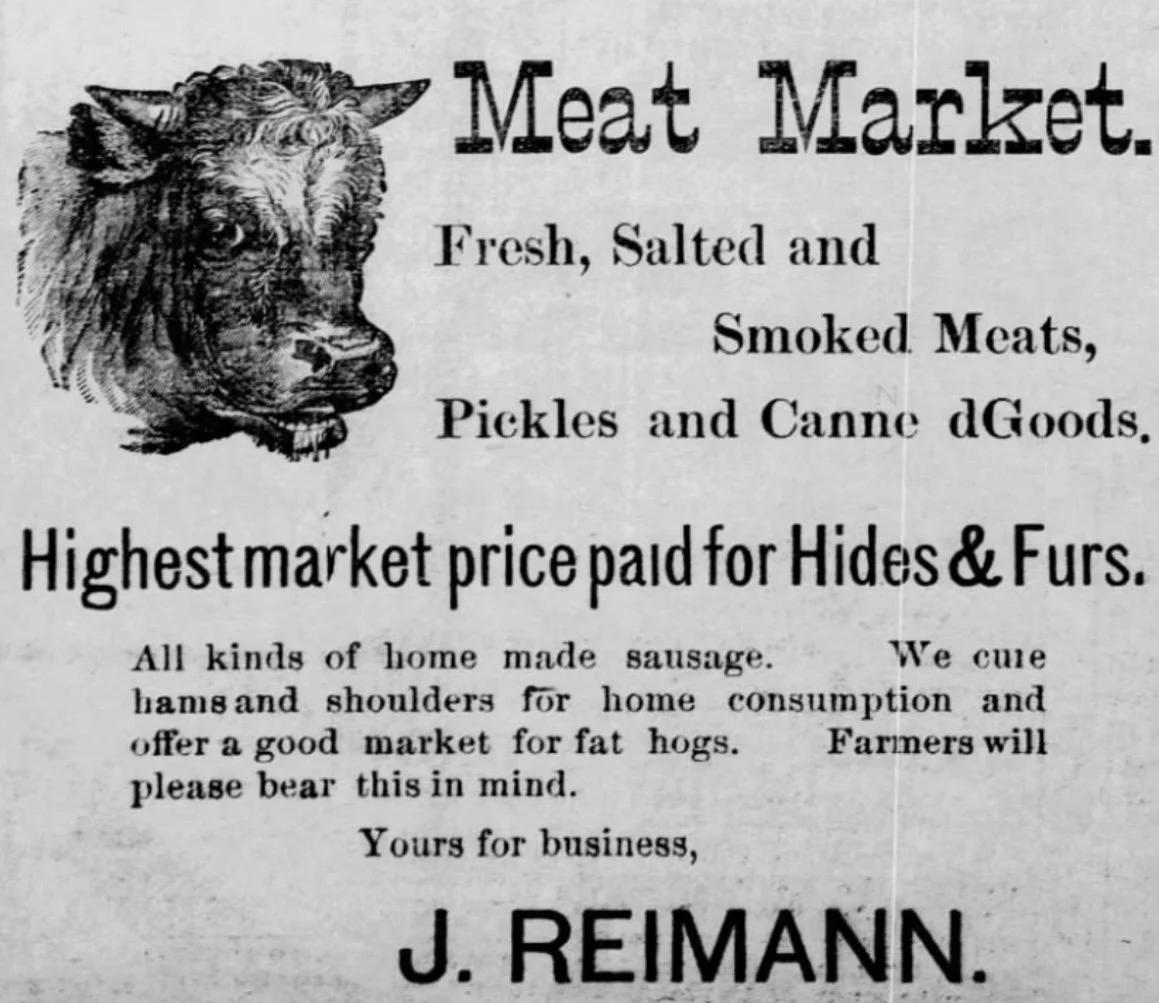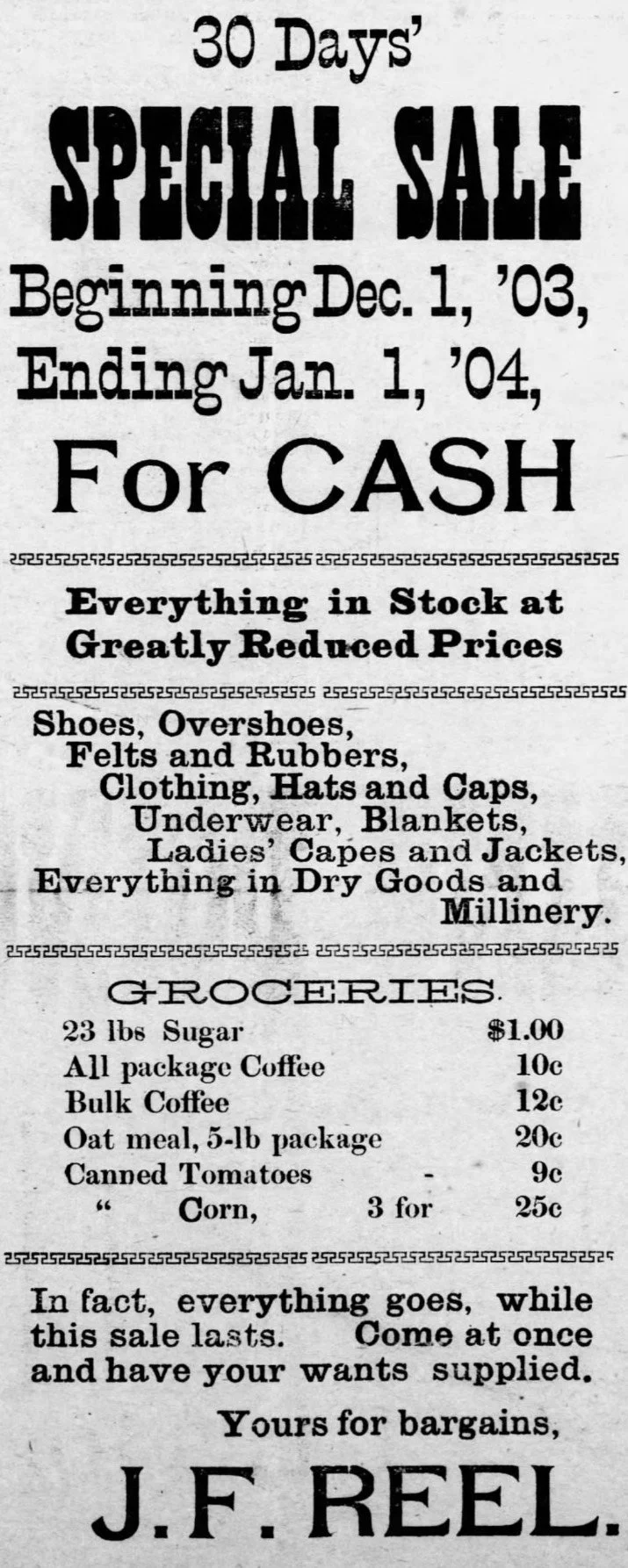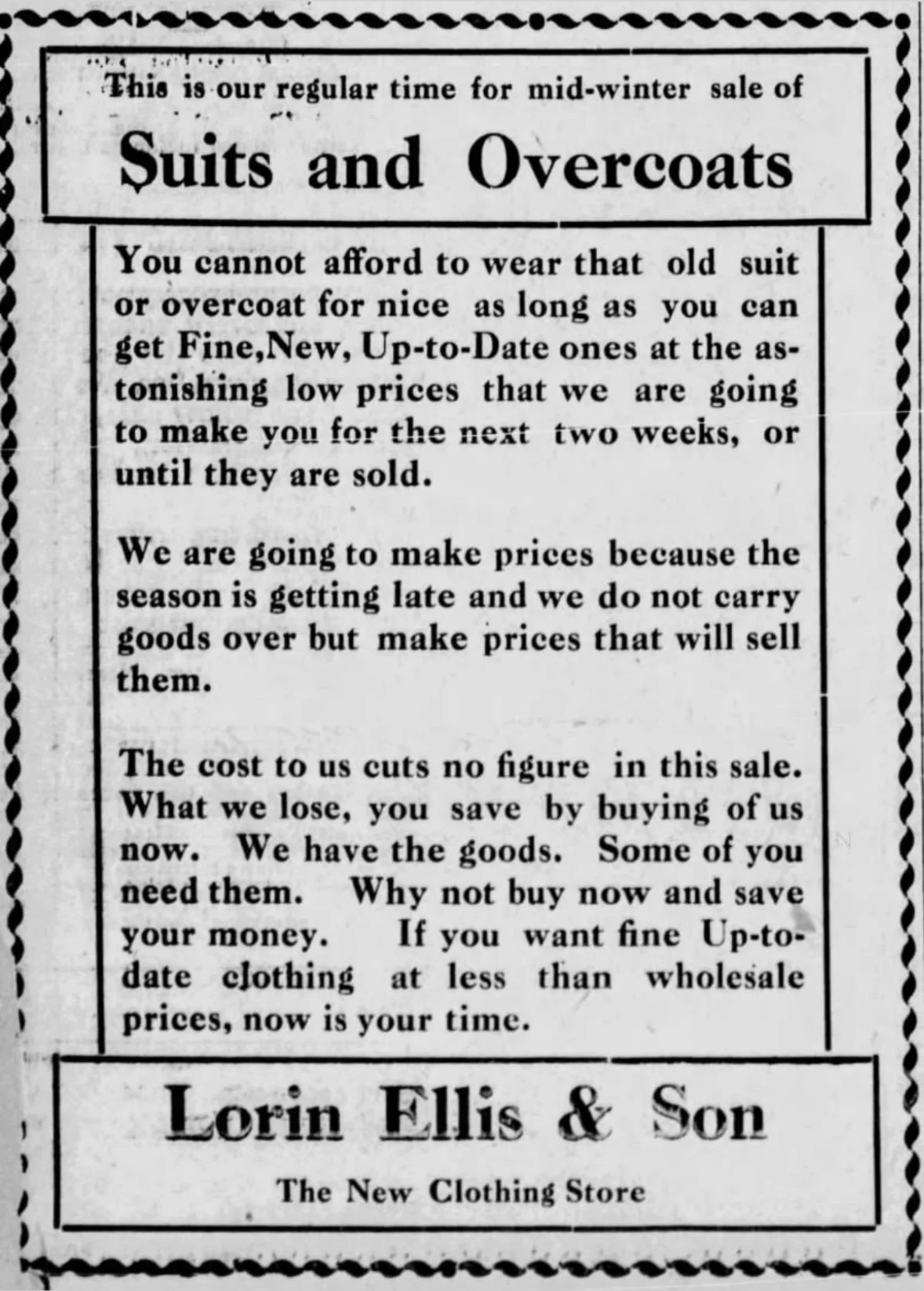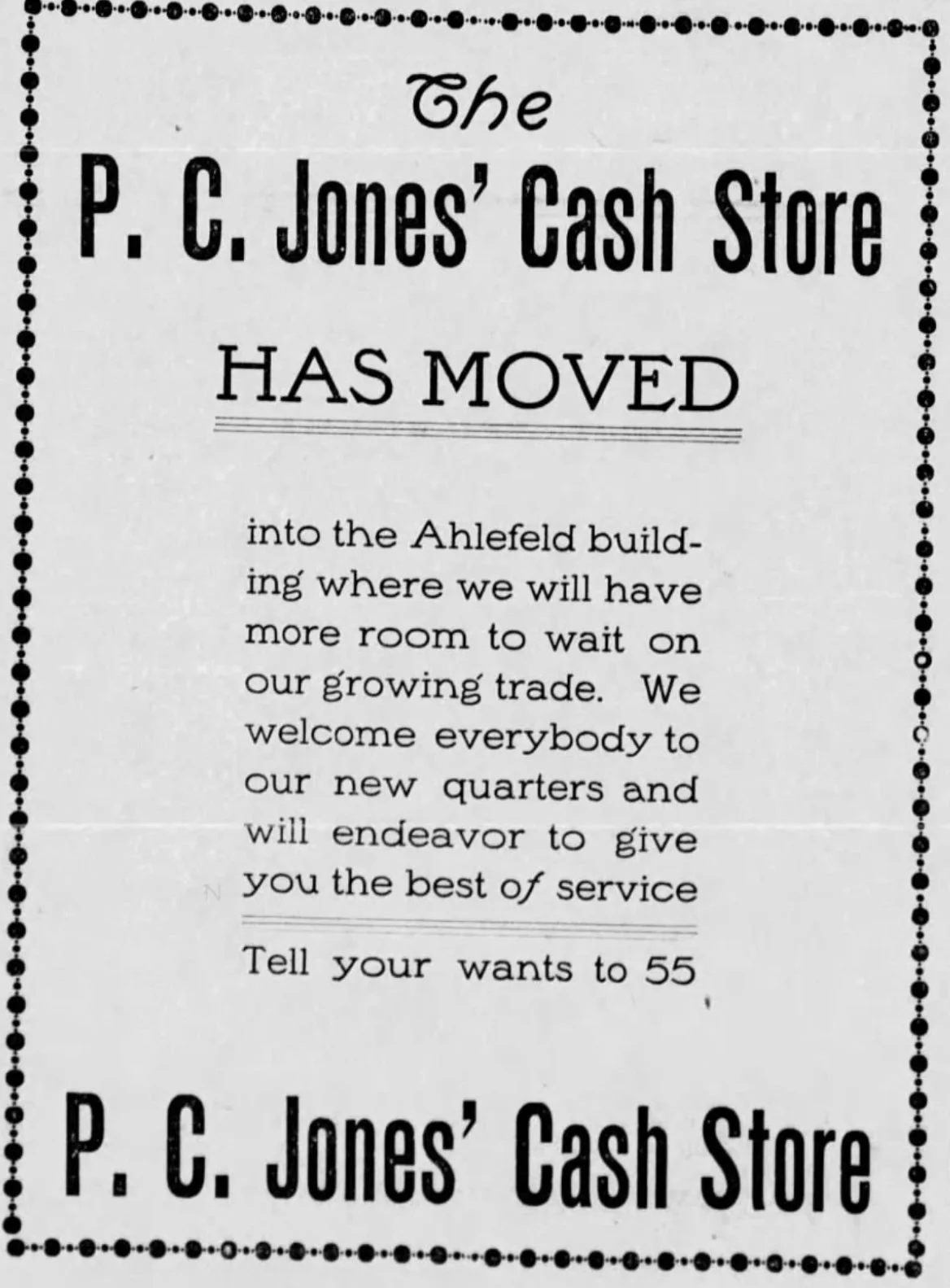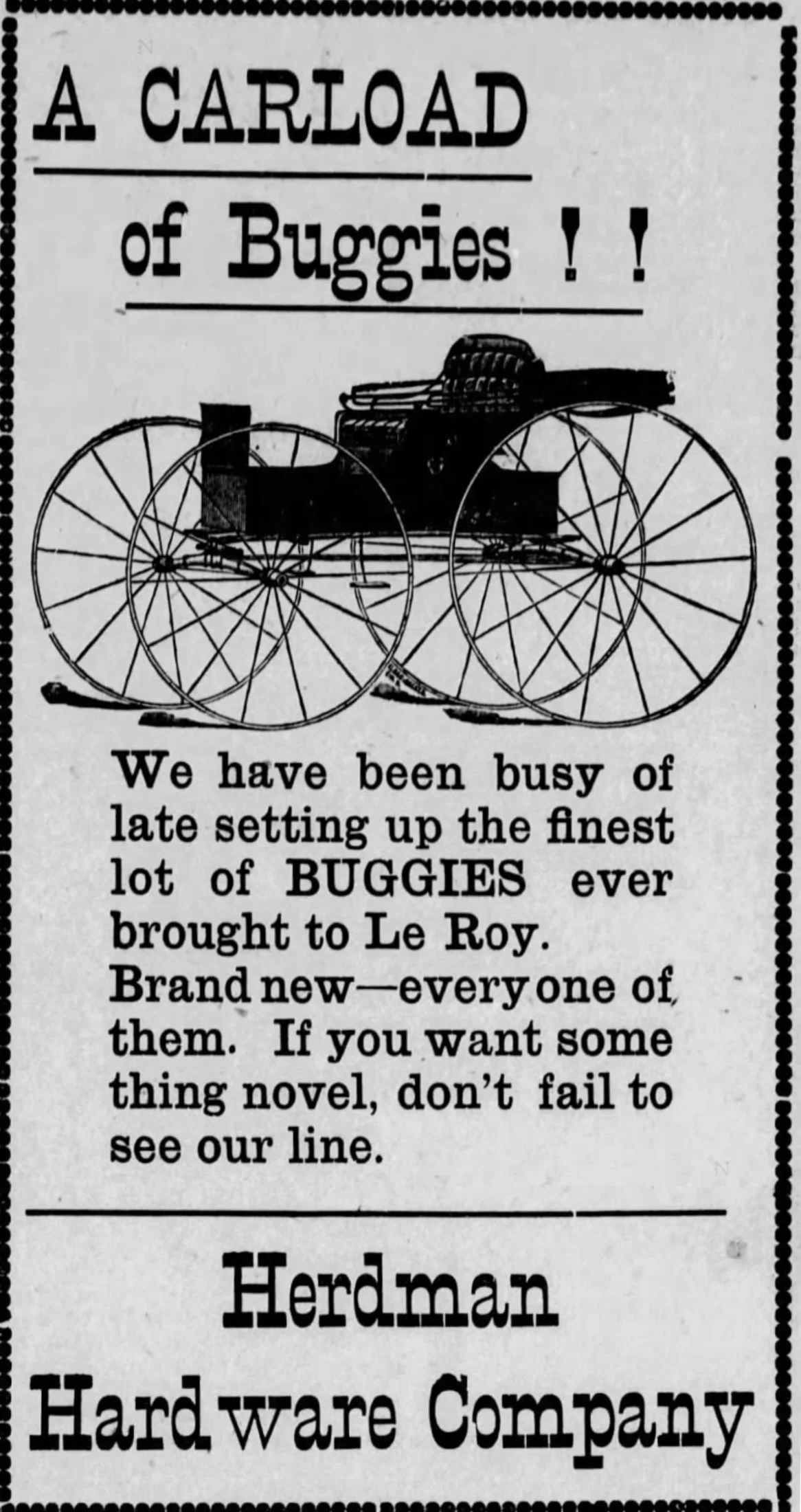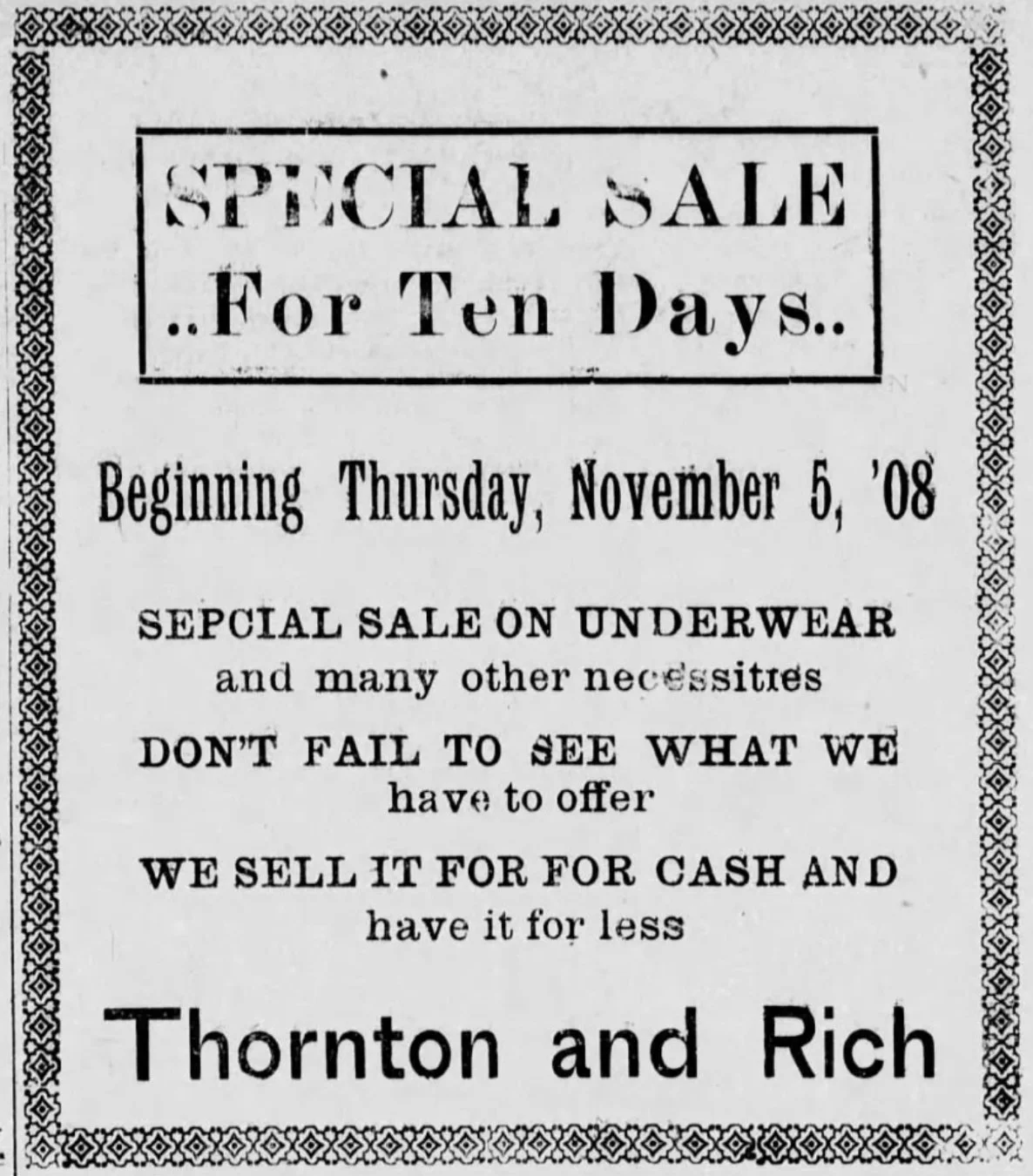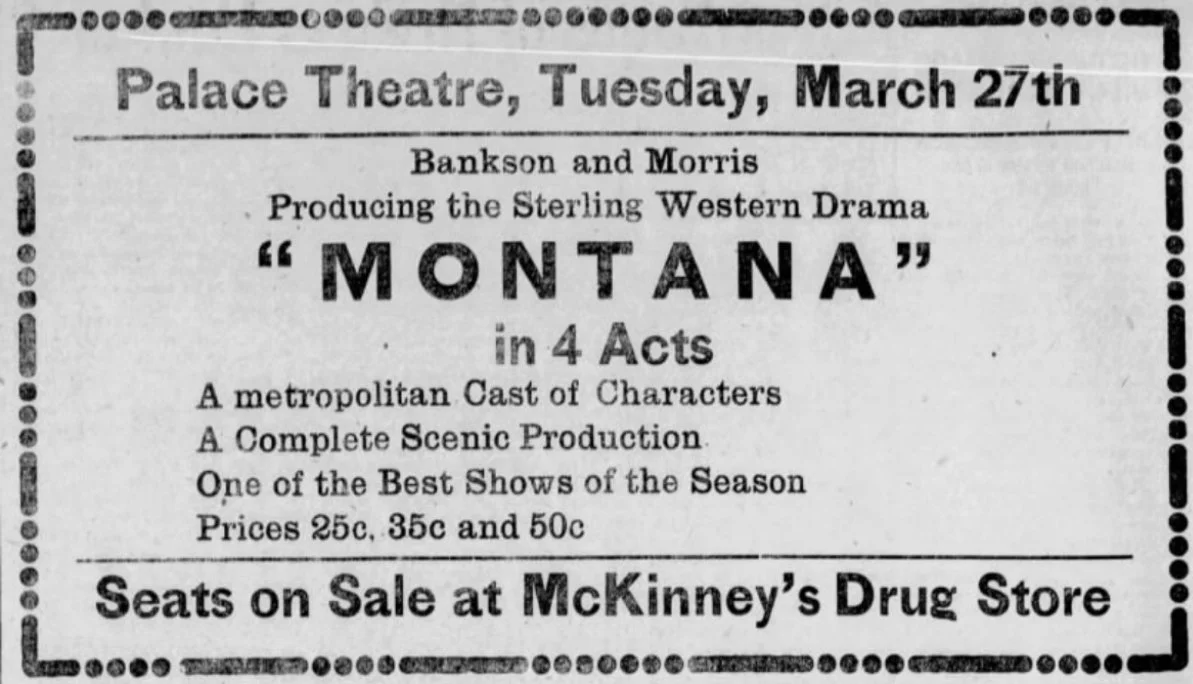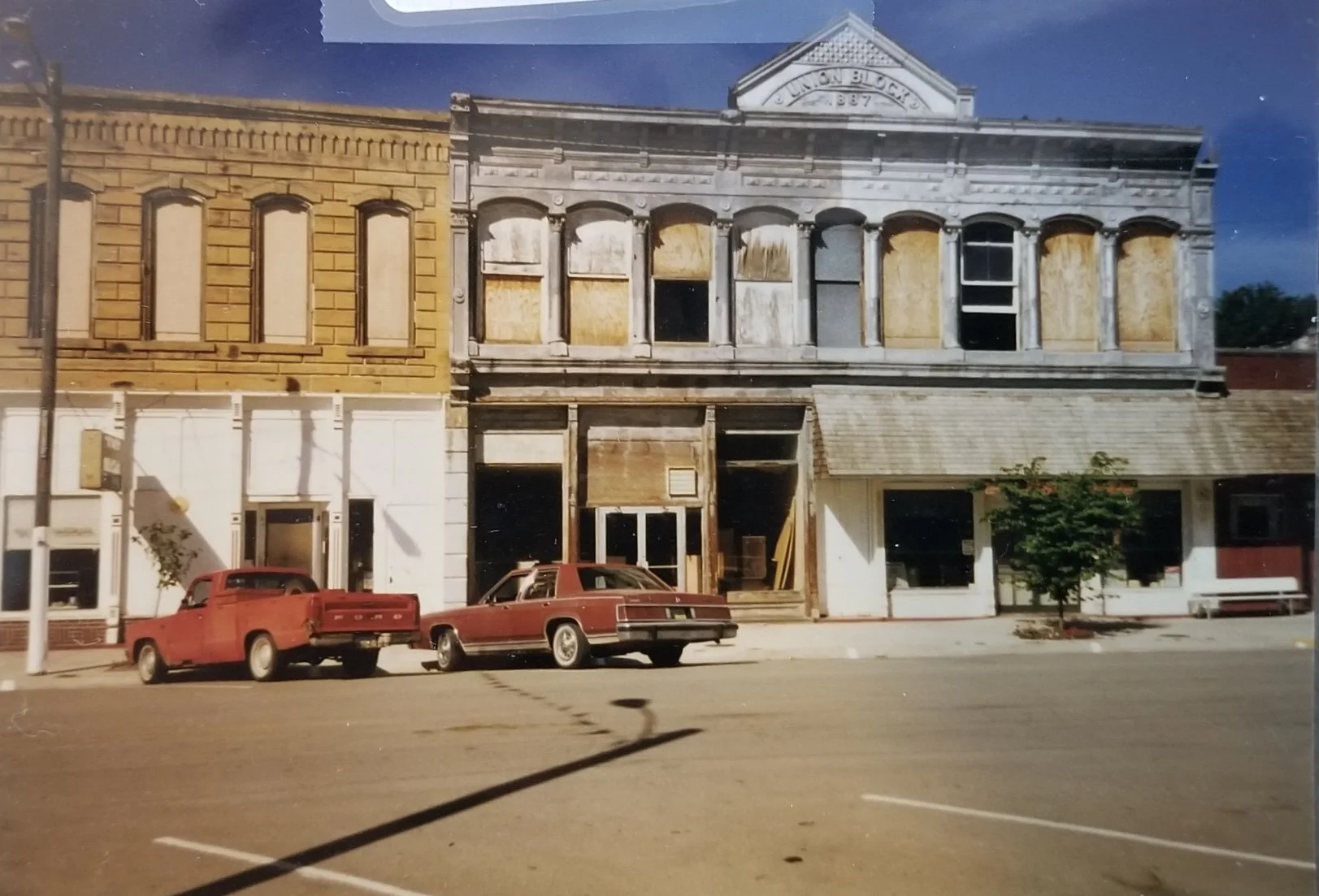LeRoy's Boom Year (1887)
In 1887, the small town of LeRoy, Kansas, experienced a dramatic transformation. Fueled by economic optimism, railroad expansion, and local enterprise, that year became known as LeRoy’s "Boom Year." During this time, many local businessmen joined forces to erect substantial two-story commercial buildings in the downtown district, aiming to modernize the town and capture the momentum of regional growth. Notable buildings constructed during this boom were the Elliott, Union Block, Central Block, Stewart Lock, and the second floor of the original First National Bank of LeRoy.
Design & Builders
The project began in March 1887 when Elliott moved his existing frame building off the site to make room for a more permanent stone structure. Construction progressed rapidly and was completed by October 1887. The building measures 32 feet wide by 80 feet deep and was designed to be divided into two commercial spaces on the ground floor. The lower façade featured decorative iron columns and large plate-glass windows, offering a modern, elegant frontage ideal for retail businesses. The upper façade was crafted from native sandstone, artistically cut by local stonemason Sam Maher. The masonry work was contracted to Wm. Jackson, and the carpentry was undertaken by Schau & Elliott.
Elliott Ownership & Tenants (1887-1899)
The Elliott Building was constructed in 1887 by L. L. Elliott, a prominent figure in the town’s early development. Situated in a prime commercial location, the building quickly became a hub for local businesses. The first ground-floor tenant was Garner & Sharon, and shortly, they became neighbors with The City Meat Market, which would go on to change ownership several times over the years while still under Elliott’s ownership. In 1888, K. Sharon bought out his partner, G. W. Garner, and continued operating the business solo until October 1889. The building saw a new chapter in January 1890, when Jas. Myers opened a clothing and general merchandise store. By 1891, G. W. Garner returned to the Elliott Building, reopening his dry goods store, only to sell it a year later in January 1892 to R. Norton, who operated the store until it his death in January 1895.
Meanwhile, the City Meat Market continued to serve the community, though it went through several proprietors, such as the Valley Meat Market and the LeRoy Meat Market. The second floor of the Elliott Building also had a vibrant history; it was originally home to Morton & Quiggle’s Billiard Parlor, a popular local gathering spot, which eventually came under Elliott’s direct ownership in 1896. L. L. Elliott would then sell the building in August of 1899.
Dickinson Ownership & Tenant (1899-1900)
In August of 1899, R. E. Dickinson, a prominent harness maker and local businessman, purchased the Elliott Building from L. L. Elliott with plans to expand his growing enterprise. Dickinson transformed the former R. Norton Cheap Cash Store into a harness store and factory, carrying a large selection of harnesses, saddles, and all types of horse furnishings. Although Dickinson sold the building to J. R. Ahlefeld in April of 1900, he continued to operate his business in the Elliott Building until 1901. That year, he purchased and relocated south to the neighboring E. S. Wade Building for a larger storeroom. The Wade Building was also notable for housing the Union Hall Opera House on the second floor.
Ahlefeld Ownership & Tenants (1900-1913)
In April of 1900, J. R. Ahlefeld purchased the Elliott Building, and almost immediately, Ahlefeld began improvements with the intent of attracting a clothing merchant to the site. That same summer, E. H. Reddington moved his buggy and implement business into the second floor of the building, and by 1901, Reddington expanded, occupying the south ground-floor storefront. Meanwhile, the north storefront was occupied by LeRoy Meat Market and then J. Reimann’s Meat Market. In 1902, Ahlefeld made a major structural change by removing the first-floor partition wall, creating a larger retail space to accommodate J. F. Reels’ general store. In 1903, the Modern Woodmen of America leased the second floor, and by 1907, the second floor was again transformed—this time into a showroom for Herdman Hardware Company, which filled the space with a display of brand-new buggies.
Ahlefeld undertook a significant remodeling of the building in January 1908 with the installation of a decorative tin ceiling on both floors, the replacement of the old awning, a fresh coat of paint for the façade, and the addition of maple hardwood floors on the second floor. The second floor changes were made in preparation for a roller skating rink, which opened in March 1908 under the joint management of Ahlefeld & Ringle. The building continued to evolve, with Thornton & Rich operating a general merchandise store there during this time. In 1909, Lorin Ellis & Son, Clothiers, moved into the first-floor space, followed in 1910 by the P.C. Jones Cash Store.
After more than a decade of ownership, during which he transformed the Elliott Building into one of the most active and adaptive commercial properties in town, J. R. Ahlefeld sold the building in March of 1913 to L. M. Harreld.
Harreld Ownership & Tenant (1913-1919)
L. N. Harreld purchased the Elliott Building in March 1913 and moved the Palace Theatre into the building, transforming it into a venue for public amusement. Harreld renovated the building by adding enough seating to accommodate 275 people. The Palace Theatre offered a variety of entertainment, including motion pictures, live theatrical performances, and guest speakers. After operating the theatre for over six years, Harreld sold both the business and the building to George Mason in November 1919.
Manson Ownership & Tenant (1919-1920)
George Manson purchased the Palace Theatre in November 1919, continuing the operation as a local entertainment venue. In January 1920, he traveled to Kansas City with L. N. Harreld to acquire a 15-horsepower gasoline engine and generator to power the theatre. However, shortly after making this investment, Mason sold both the theatre and the building that same month to Roy D. (Happy) Johnson, who will continue the business.
Johnson Ownership & Tenant (1920-19??)
Roy D. (Happy) Johnson purchased the Elliott Building in January 1920, and upon acquiring the property, Johnson took immediate steps to modernize and improve the building's infrastructure. He installed ventilating fans, widened the staircase entrance, and painted the walls and hardwood flooring…..
Nelson Ownership & Tenant (?)
Wimer Ownership & Tenant (?)
Ringle Ownership & Tenant (?)
Smith Ownership & Tenant (?)
Wimer Ownership & Tenant (?)
Gunlock & Gleue Ownership & Tenant (-2020)
White Ownership & Tenant (?)
Meats Ownership & Tenant (2020-)
L. L. Elliott (1853-1917) & Addie S. Elliott (1861-1908)
Builder, Businessman, and Civic Leader Respected Citizen, Devoted Wife, and Mother
Lawrence Lee “L. L.” Elliott was born near Delaware, Ohio, on July 21, 1853. At the age of four, he moved with his family to LeRoy, Kansas, where he would spend much of his life contributing to the town’s development and civic life. Elliott was a carpenter by trade, and his skills and ambition led him to build the Elliott Building in 1887, a lasting piece of LeRoy’s early commercial architecture. Over the years, he wore many hats—as a grocer, businessman, city councilman, and lastly as the city marshal in 1911. Elliott and his children moved to Rockville, Missouri, after trading his LeRoy farm for a local telephone exchange. L. L. Elliott passed away on November 9, 1917, at the age of 64. His legacy lives on through the Elliott Building and the community he helped shape.
L. L. Elliott married Addie S. Smith on January 1, 1883, in LeRoy, Kansas.
Addie S. Elliott was born on January 30, 1861, in LeRoy, Kansas. The daughter of P. H. Smith and Mrs. Frank Morgan, Addie was raised in a community where she would become one of its most admired and beloved young women. Known for her fairness, grace, and kind spirit, she earned the deep respect and affection of all who knew her. Together she and L. L. raised six children, four of whom—Fay, Vernon, Hoyt, and Virgil—survived into adulthood. Addie S. Elliott passed away on December 27, 1908, at the age of 48. Though her life was cut short, her legacy as a cherished figure in LeRoy endured through her family and the many lives she touched.
J. R. Ahlefeld (1840-1920) & Jane E Ahelfeld (1841-1905)
Prominent LeRoy Citizen, Businessman, and Civic Leader Beloved Community Member and Generous Spirit
Born in August 1840 in Ohio, Jacob R. “Jake” Ahlefeld was one of the early and influential citizens of LeRoy. Known for his active involvement in public affairs, Ahlefeld played a vital role in the town’s growth and civic life for many years. A successful and enterprising businessman, he owned and operated the LeRoy Real Estate Exchange and also practiced law as an attorney. Among his greatest contributions to the town was the construction of the original First National Bank of LeRoy building, located where the new triplex stands today. In April 1900, he purchased the Elliott Building, also serving as the mayor of LeRoy from 1905 to 1907, guiding the community during a time of growth and development. He passed away on August 23, 1920, at his home in Gentry, Arkansas, at the age of 80.
J. R. married Jane E. Ward on May 20, 1873, and together they had a baby boy, but he only survived to be 10 months old in 1875.
Jane E. Ahlefeld was born on February 16, 1841, in Fredonia, New York. She lived there with her parents until 1863, when she moved to LeRoy, Kansas, beginning a new chapter of life in what would become her longtime home. Known for her warm heart and community involvement, Mrs. Ahlefeld was fondly remembered by many in LeRoy for her thoughtful Christmas and birthday gifts. In 1902, Jane suffered a debilitating stroke that left her physically and mentally impaired. She passed away on August 3, 1905, at the age of 64.
